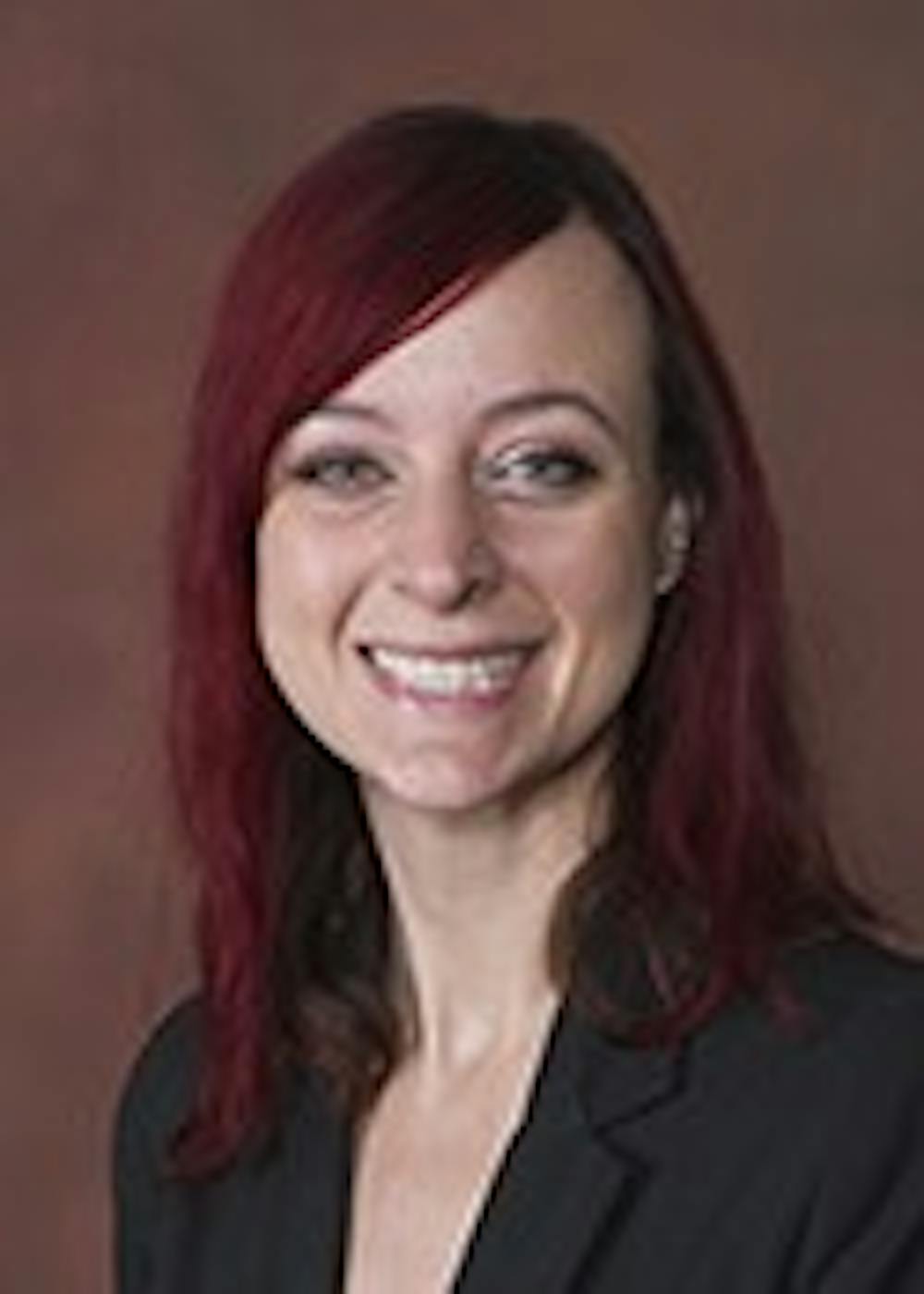Only 1 in 5 college students said they felt "very prepared" to join the workforce, according to the 2015 McGraw-Hill Education's annual student workforce readiness survey.
One Ball State instructor, a recipient of the 2015 Excellence in Teaching Award, has completely redesigned her classroom and teaching style with hopes of better preparing students for the real world.
Journalism instructor Megan McNames said she's no longer focused on creating publications like newsletters and logos in her public relations publication design course, but instead will teach students how to be problem solvers and critical thinkers in preparation for a career after college.
“I taught this class for six years and it focused really, really heavily on design skills,” McNames said. “I think those skills there are important, but ... what employers are looking for now and what really drives innovation forward is problem solving skills — people who can jump in, understand the problem and decide the best way to solve it.”
McNames said prior to this transformation, she always felt like she was just barking orders to her students and telling them what to do, rather than teaching them how to know when something is the right thing to do.
“My vision for the class is to bring a lot more critical thinking and that thought process and problem solving,” McNames said. “I have always really loved working in teams with people and hearing other people’s ideas and researching things, so I wanted to bring that into the classroom and help my students do that as well. I wanted to feel like I was working along side them instead of just being in charge or them and telling them what to do.”
McNames said she thinks this approach in teaching, compared with the lecture-based classroom styles, is the most beneficial and gives students the ability to actually develop.
For students who might not end up having a career in the field they studied, this approach can better sharpen their skills to help them get the perfect job.
"Lots of people have that story,” McNames said. “I think it's because when you go to school and you only learn skills, you don’t learn them to a high enough level to be a really, really great master at those skills.”
McNames said now developing critical and problem solving skills will be done in school, not in the business world. She said this will put her students a step above others.
“It’s a lot harder to become a critical thinker and become a problem solver when you’re having to go to work every day and work on someone else's business,” McNames said. “It’s a lot easier when you’re in school and you have a lot of freedom [where] it's OK if you go to school and you work on a problem and you don’t solve it and you fail and you learn from it. That’s OK in school; it's not OK in a lot of businesses. So I absolutely think school is ... the time to try things that seem impossible and find solutions, because the business world doesn’t always give you that opportunity.”
She said the feedback she's received from the students since her decision to change her course was very positive, though some students said it was a little scary.
“I think a lot of students were excited to finally be trusted and to finally be taught that you can be a critical thinker and problem solver,” McNames said. “I think a lot of students ... became empowered to go out and find problems and tackle them. For some students, though, it was just so scary because no one is telling you exactly what to do, you have to be responsible for everything, but that’s how it is in the real world.”
The students weren’t the only ones noticing the positive influence and change of McNames' classroom.
Kathleen L. Jacobi, assistant director of faculty development of the Office of Educational Excellence, said this shift in the classroom impressed the department and believes this approach is what will be most beneficial to students' success.
“That way of teaching replicates what they are going to be doing out in the field,” Jacobi said. “We have all taken the large lecture classes early on in our student career where their goal is to push content and, yes, they have their place, but to really be engaged with the content is much more important in teaching students how to be critical thinkers.”
After receiving her teaching award and grant from the Office of Educational Excellence, Jacobi said the office met with McNames and introduced her to the Interactive Learning Space.
The university established the Interactive Learning Space Initiative with the purpose of strengthening learning though pedagogy, learning space design and technology, according to bsu.edu. This type of learning community-centered education helps prepare graduates to live and work in a world that requires collaboration and problem solving.
By joining this program, McNames was able to move forward to further what she wanted to do with her students, Jacobi said.
This shift in the classroom has spread across campus with about 100 faculty members from all colleges and departments a part of the initiative.
“I definitely see this teaching and learning style being a trend at Ball State and other universities across the country,” McNames said. “I think universities that don’t take up this call to help students become problem solvers are really going to be missing out.”
Even though McNames will not be teaching the same class next semester, she said this approach to help students become problems solvers is something she plans on continuing.





